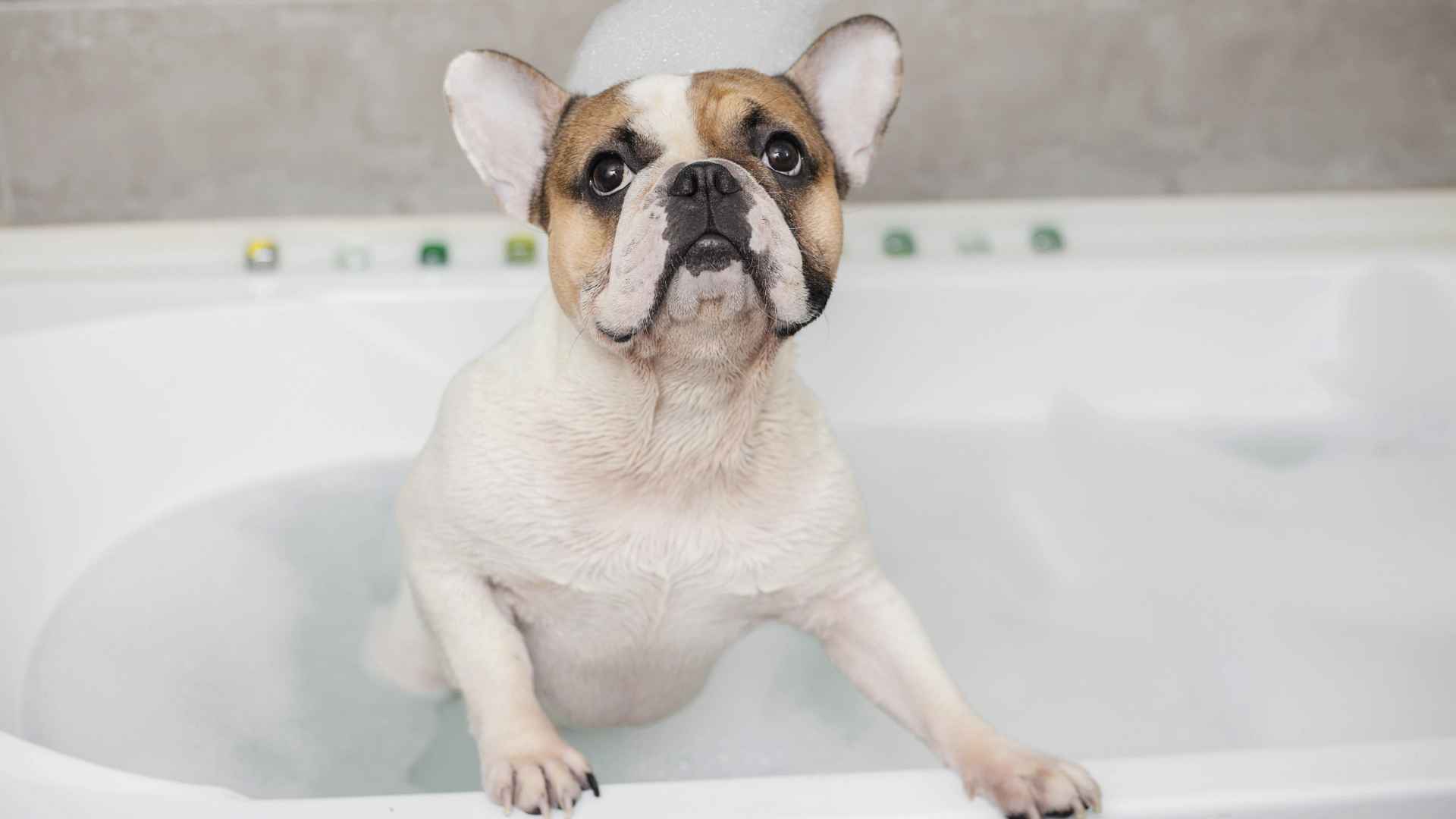Bath time for dogs can reveal a lot about their nature. Some dogs greet the swirl of warm water and the lather of shampoo with quiet patience, standing still as if the process is simply another part of their day. These dogs create a scene of calm, their steady expressions and relaxed posture turning a routine wash into a peaceful ritual.
Their willingness to be handled, rinsed, and dried shows how temperament and grooming needs often go hand in hand. Certain breeds are especially known for this serene approach, making every bath smoother for both the dog and its owner.
This article explores seven breeds that consistently maintain composure in the tub, highlighting the qualities that make them natural candidates for stress‑free grooming. For anyone looking for a companion who meets bath time with ease, these breeds offer an unmatched sense of calm.
Dog Breeds That Stay Calm During Bath Time Always
1. Cavalier King Charles Spaniel
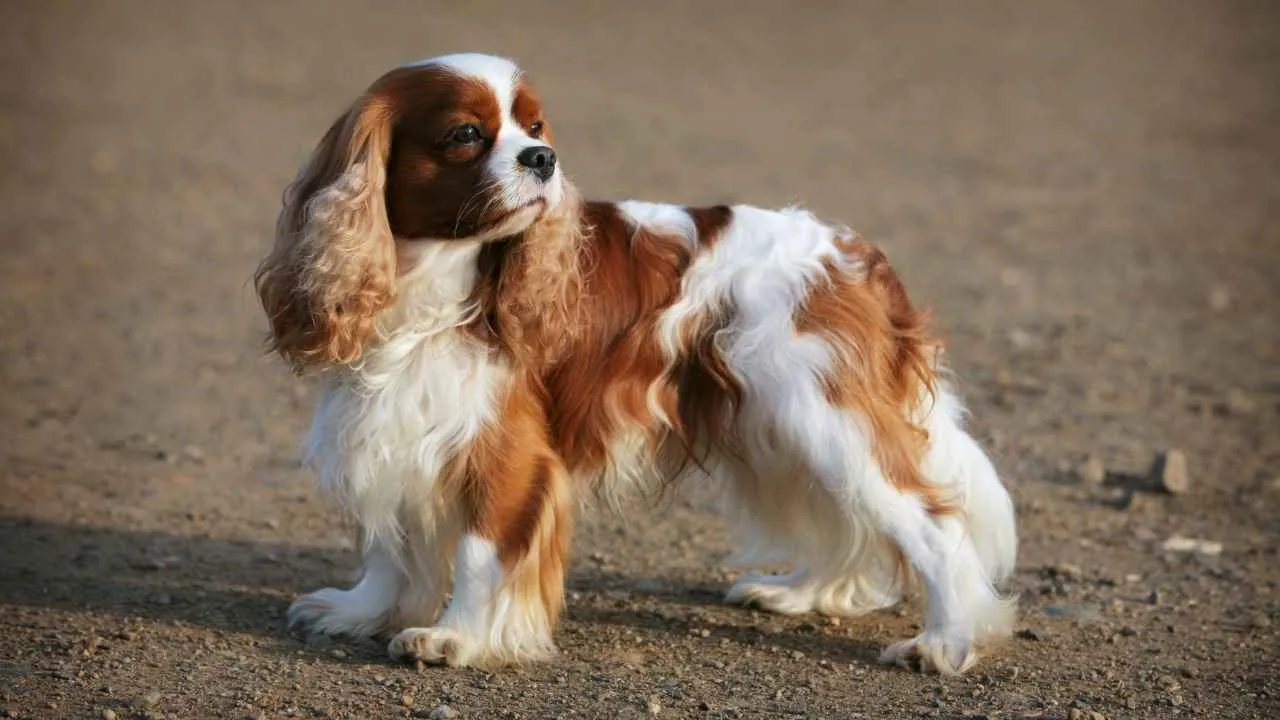
The Cavalier King Charles Spaniel has an inherently gentle demeanor. Their affectionate personality makes them more likely to stay close to their owner during grooming rather than resist the process. This natural trust helps create a soothing environment around water and handling.
Their silky coat benefits from frequent bathing, as dirt and oils can accumulate quickly on the fine hair. Warm water and gentle massaging motions seem to comfort the breed, and many Cavaliers appear to enjoy the sensation.
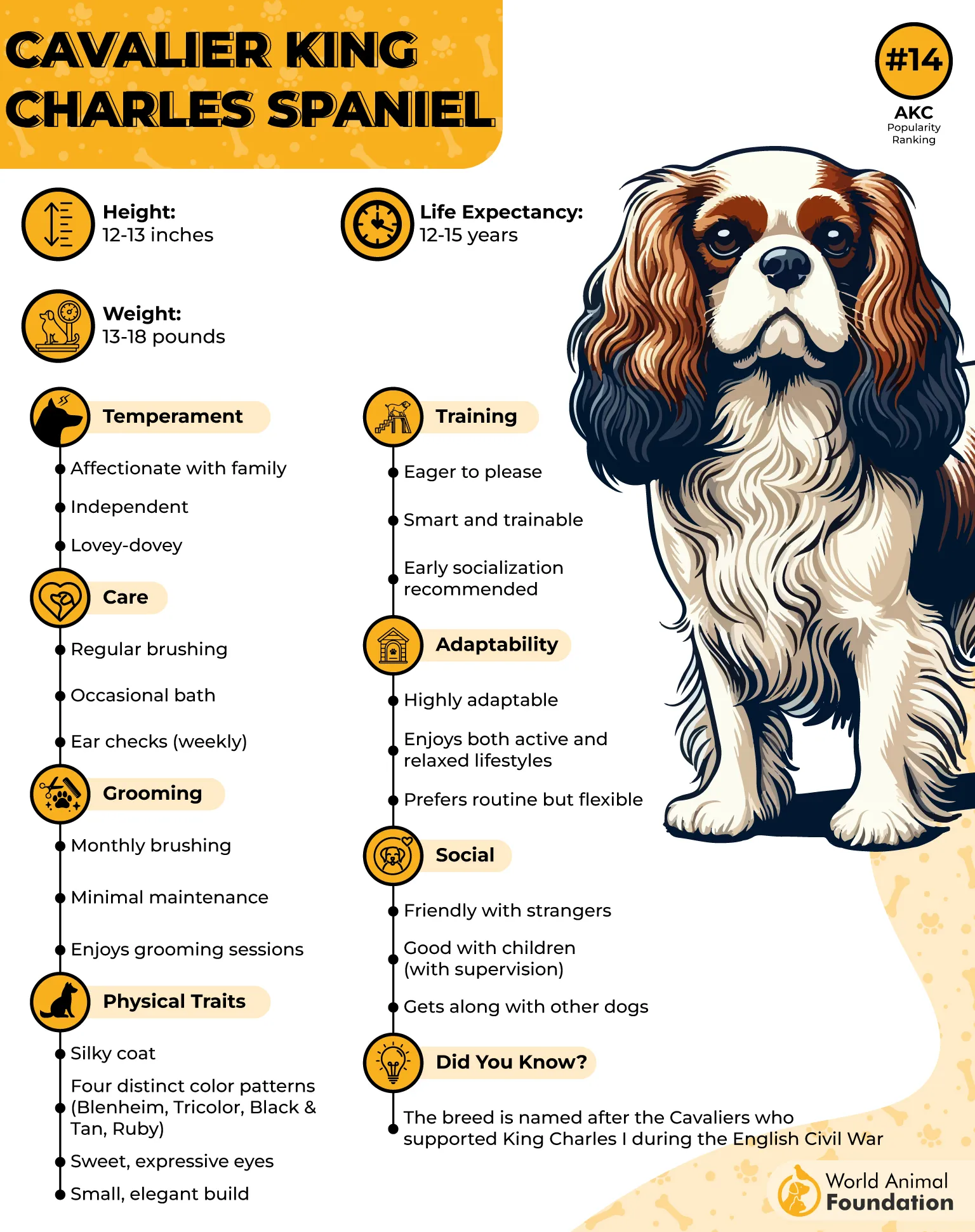
Because Cavaliers were bred as companion animals, they crave closeness and reassurance during every activity. Soft voices and steady hands keep them relaxed in the bath. This cooperative temperament is one of their most cherished traits.
Regular brushing is just as important as bathing for this breed, since their feathered ears and chest fur tangle easily. Detangling before a bath keeps the shampooing process smooth. A good conditioner afterward adds shine and prevents matting.
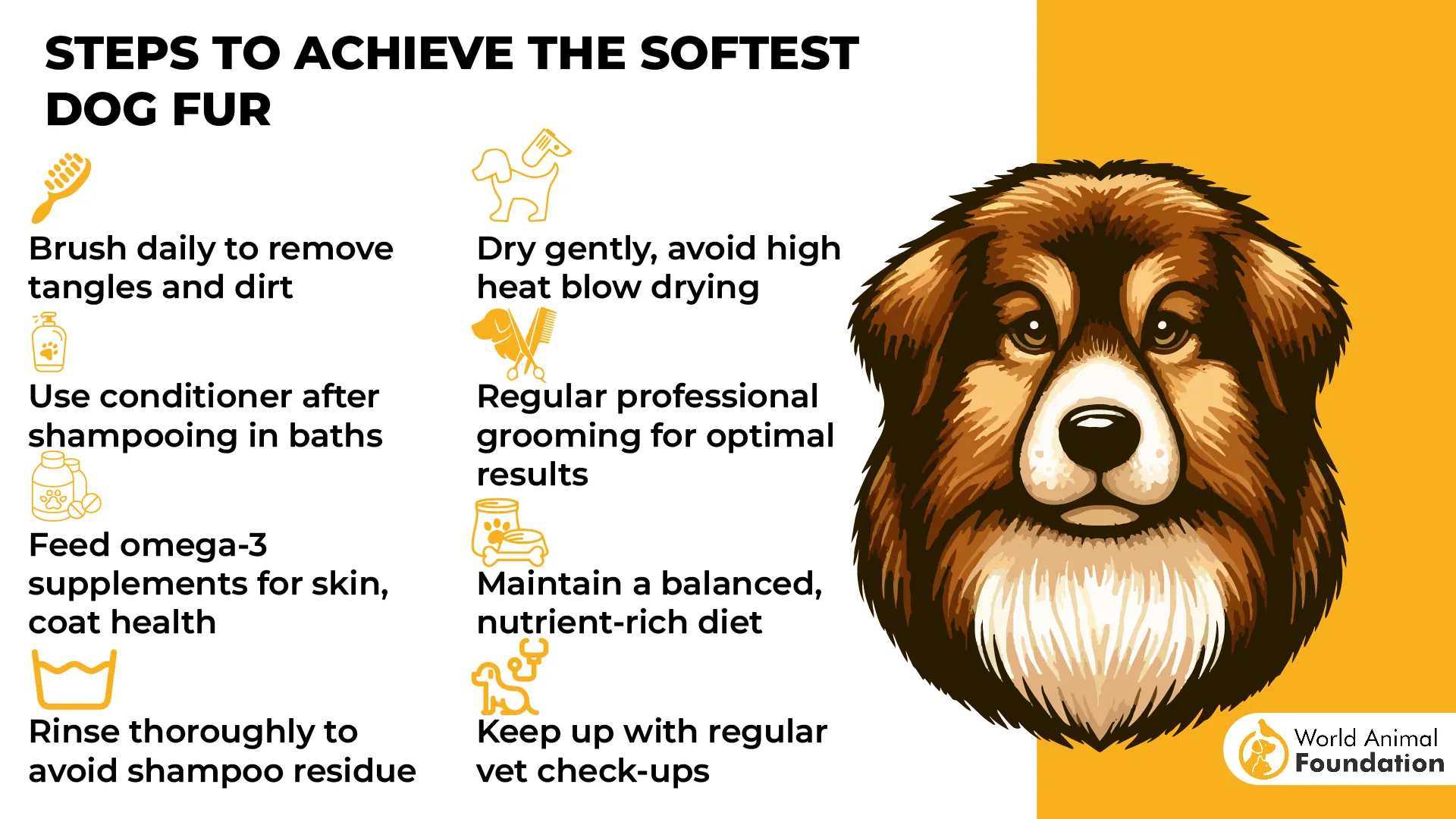
Owners of Cavaliers need to pay attention to health concerns. Their long, floppy ears trap water easily, which can lead to infections if not dried well. Careful towel drying and a low setting on the dryer help prevent these problems.
Quick Tips
Brush behind the ears and under the chest before bathing to stop tangles from tightening in the water.
Keep cotton balls loosely placed in the ears during rinsing to block excess water.
Finish with a light mist of leave‑in conditioner to keep the coat soft between baths.
2. Shih Tzu
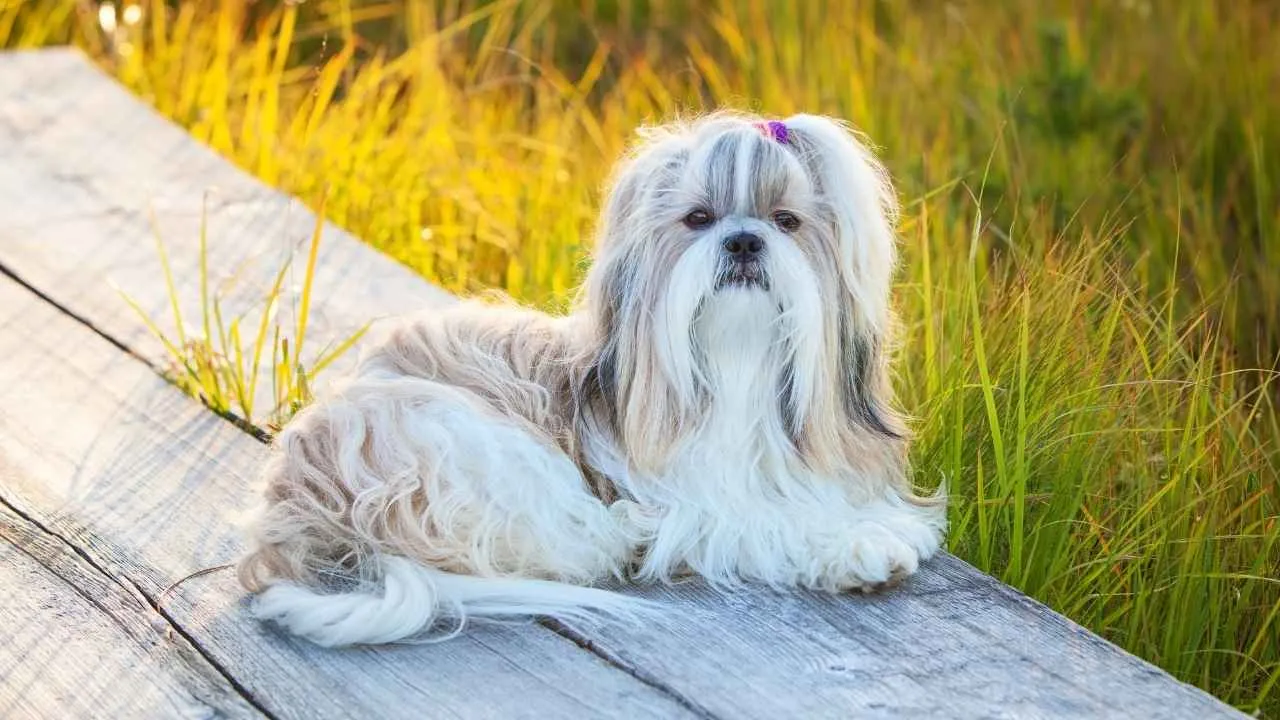
The Shih Tzu’s serene personality makes grooming sessions easier to manage. Their small size and calm temperament mean they rarely struggle in the tub when introduced gently. Most Shih Tzus settle quickly into the process once they become familiar.
According to the AKC, this breed’s long, flowing coat needs consistent care to prevent tangles and matting. Bathing every few weeks keeps the hair clean and manageable, especially if combined with regular brushing. Owners often find that rinsing slowly helps the water run through the dense coat without causing discomfort.
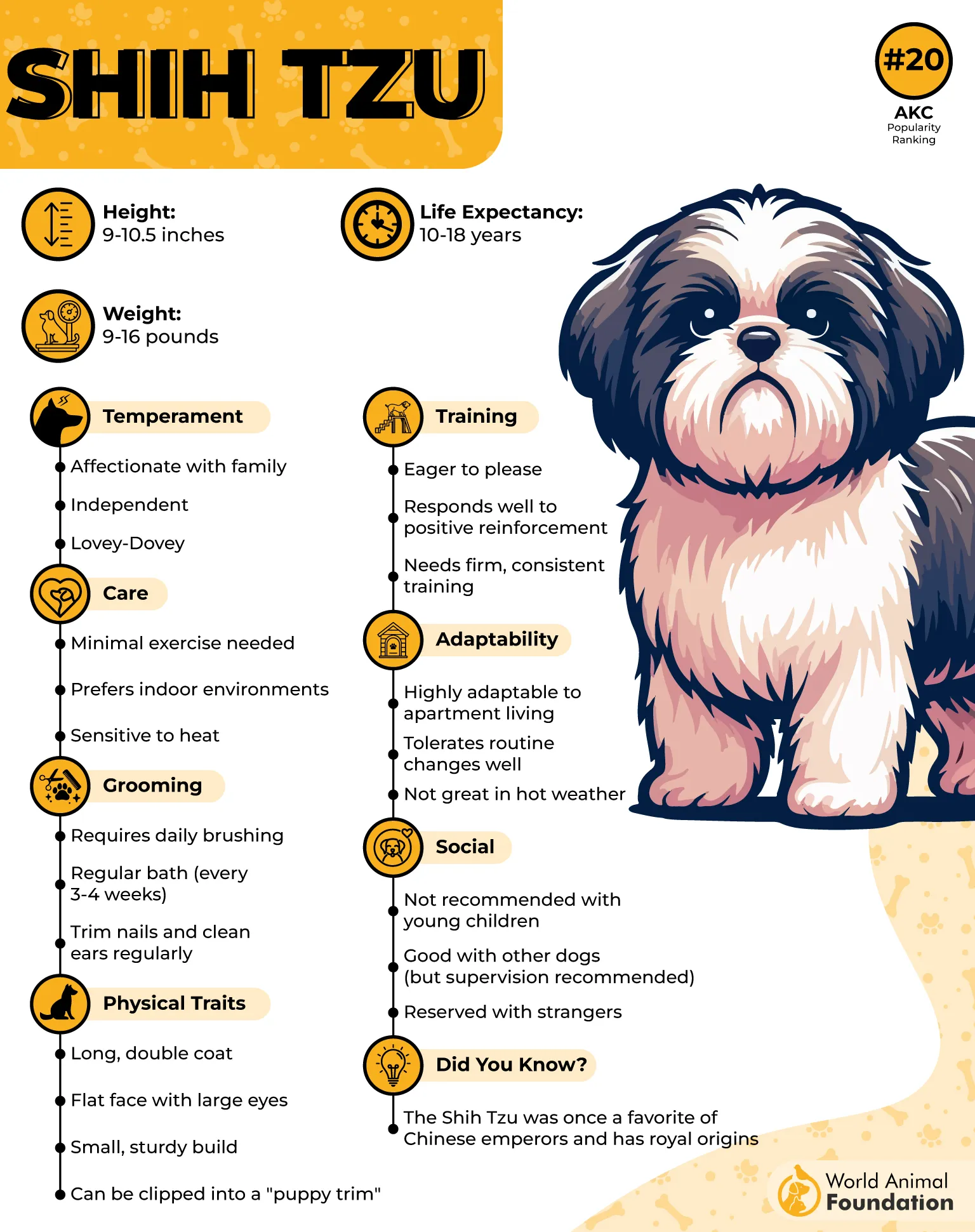
Because Shih Tzus thrive on routine, introducing bath time early and keeping it predictable creates a sense of security. Consistent handling and familiar scents help them remain calm during each step. Positive reinforcement reinforces their willingness to stand still.
Skin sensitivity is common in this breed, so the type of shampoo matters. Mild, tear‑free formulas work best to protect their delicate skin and eyes. Conditioner afterward helps maintain coat softness and prevents future tangles.
Drying is just as important as washing. Moisture trapped in their thick coat can lead to irritation or mildew‑like odors. Toweling first, followed by a low‑heat dryer, keeps their coat healthy and fresh.
Quick Tips
Use a wide‑tooth comb before baths to loosen tangles and avoid pulling during washing.
Bathe on a table or counter for better control, since many Shih Tzus feel more secure elevated.
Wrap the dog in a soft towel after rinsing to wick away most water before drying.
3. Basset Hound
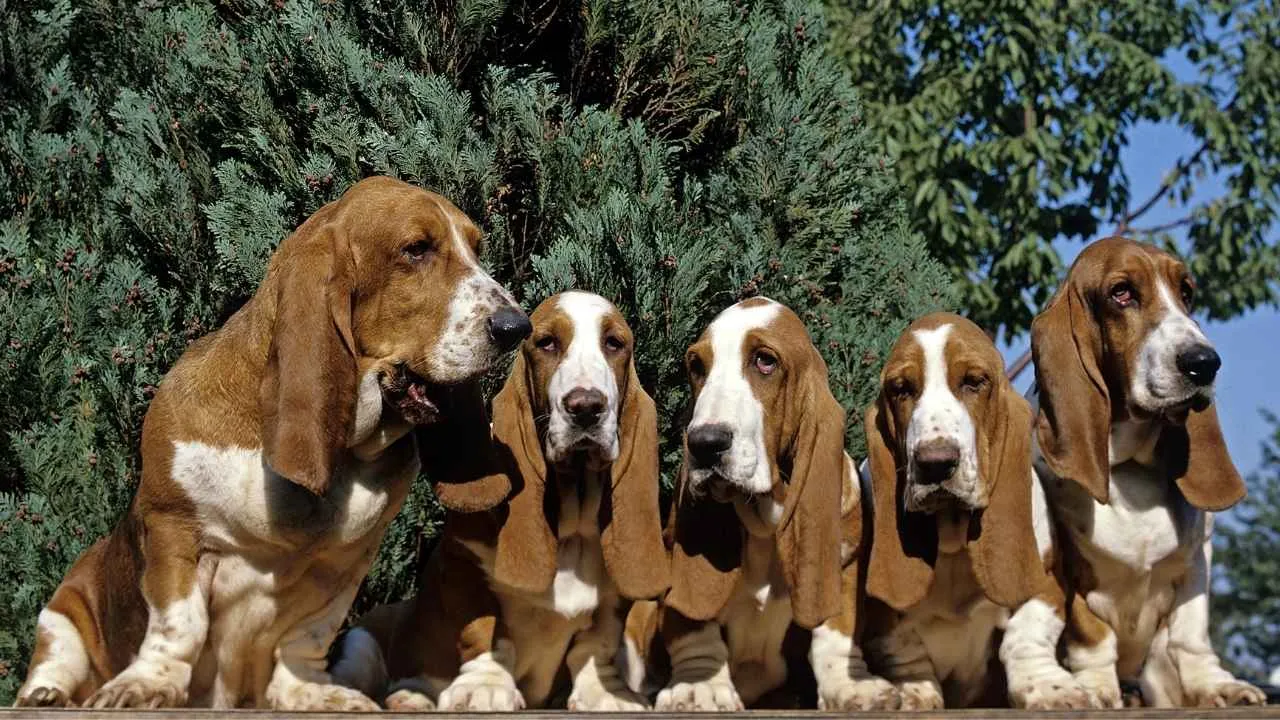
The Basset Hound’s famously laid‑back temperament makes bath time a slow and steady experience. They rarely resist handling, and their calm nature helps keep them relaxed in the water. Many will simply stand in place and wait for the process to finish.
Their short, smooth coat doesn’t require frequent bathing, but occasional washes keep their skin healthy. Water runs easily off the coat, and minimal shampooing is usually enough to clean them. Special attention is needed for areas where dirt can gather, such as their legs and underbelly.
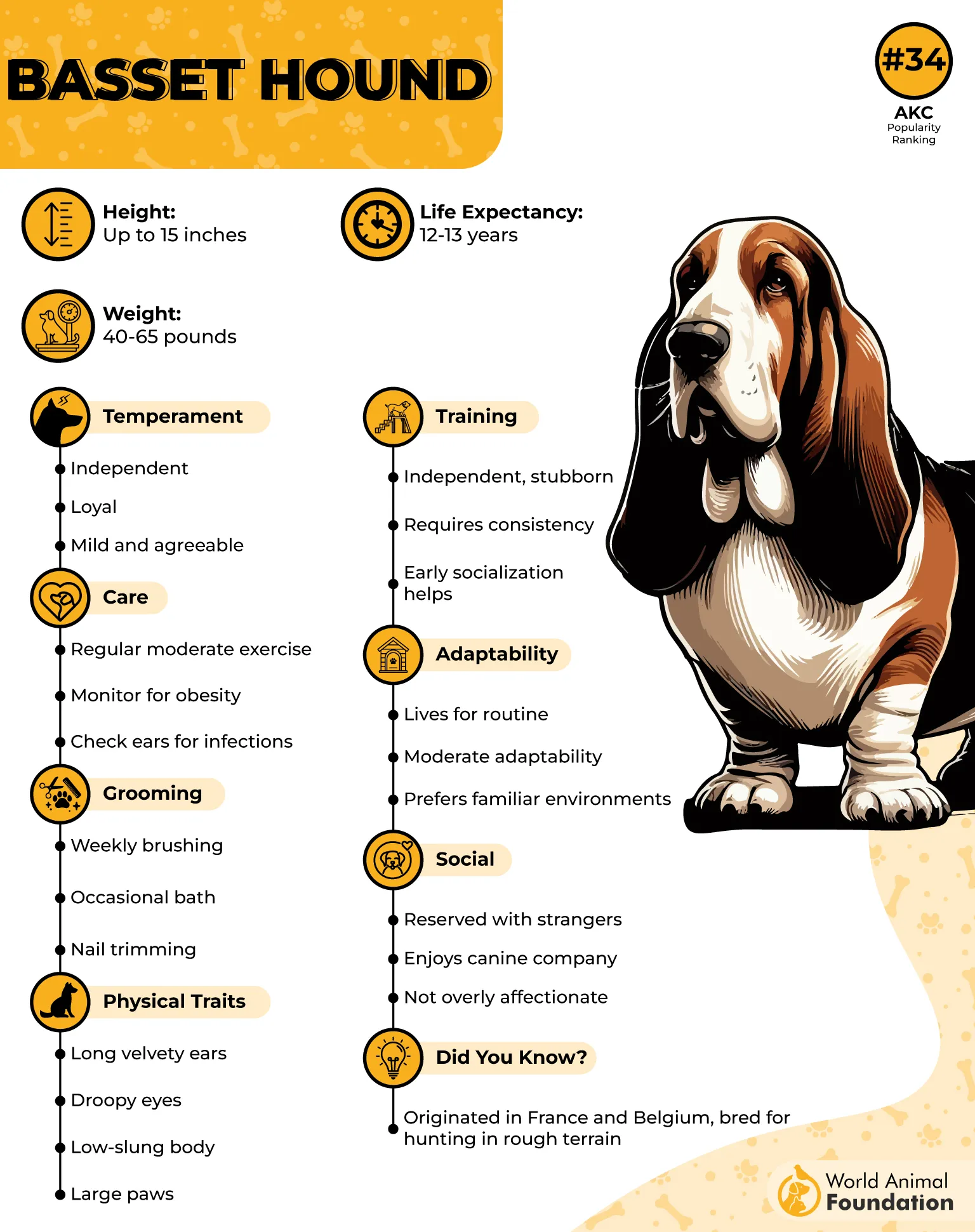
Because Basset Hounds are scent hounds, they sometimes arrive at bath time after long sniffing excursions through mud or brush. Their tolerance for grooming makes cleanup straightforward, even after messy adventures. Owners who keep wipes handy between baths find maintenance even easier.
Their long, heavy ears need careful handling during bathing. Water pooling in the ear canal can cause infections if not managed. Gently lifting and drying each ear prevents lingering moisture.
Basset Hounds have loose skin and folds that require extra attention. Soap residue can sit in creases if not rinsed fully, leading to irritation. A slow rinse and thorough drying help prevent these issues.
Quick Tips
Check and clean ear canals after every bath to stop moisture‑related problems.
Use a handheld sprayer for easier access to their low‑to‑the‑ground frame.
Pat their skin folds dry with a towel to avoid dampness that can cause irritation.
4. Newfoundland
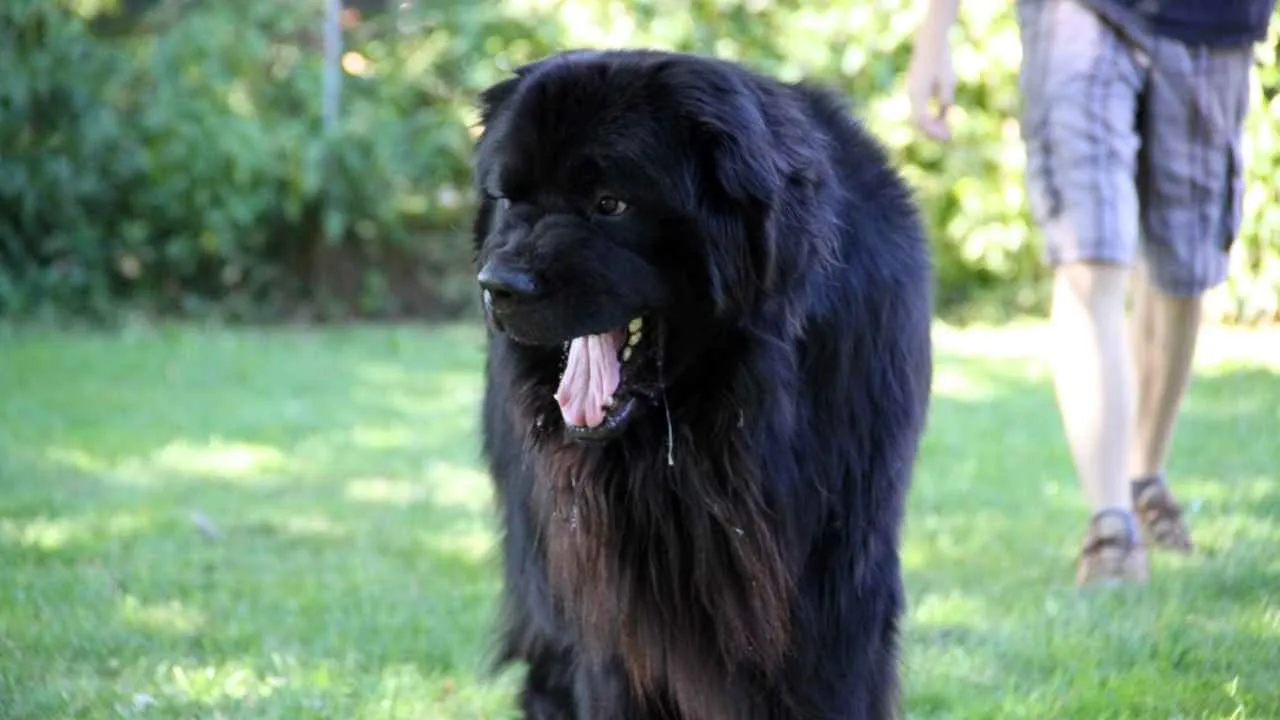
The Newfoundland’s coat is its most striking feature—dense, water-resistant, and naturally adapted for cold-water work. This thick double layer makes them slow to saturate in the tub, so longer rinse times are often needed. Owners who prepare with a good pre-bath brushing find the process far smoother.
PetMD suggests that their history as water rescue dogs explains their composed demeanor around water. Newfoundlands are comfortable being handled and soaked, and they often lean into the process rather than shy away. That same trustworthiness makes them a favorite among families.
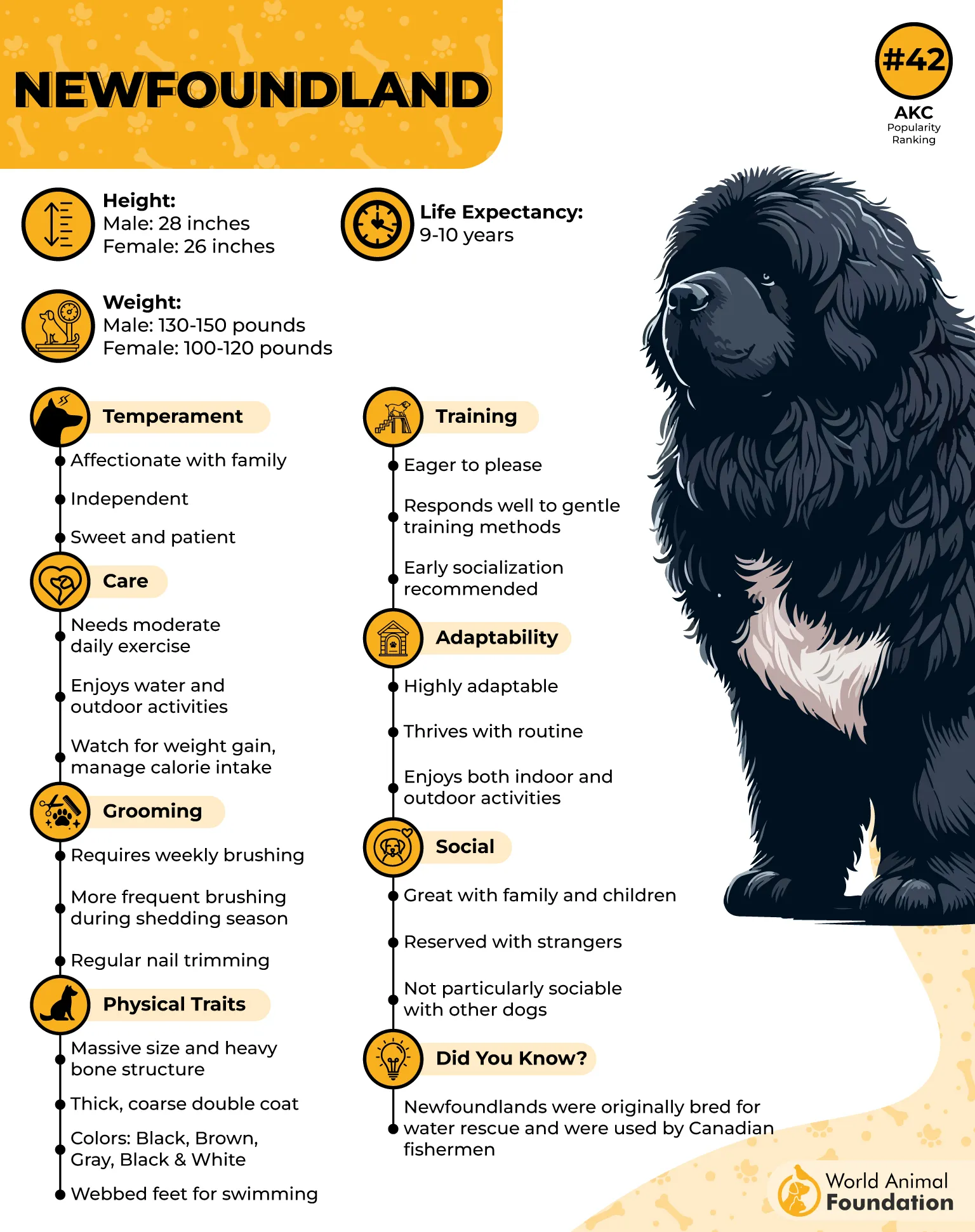
These dogs are heavy shedders, especially in spring and fall, and baths help lift dead hair from the coat. Warm water helps loosen the undercoat, while a conditioner can keep the outer layer sleek. Drying takes time, but keeps skin from staying damp.
Calm by nature, the Newfoundland rarely needs much coaxing to stay still. A low, reassuring voice works better than commands or rushing the bath. Patience is rewarded with quiet cooperation.
Ears and skin folds deserve extra attention after rinsing. Moisture can linger beneath thick fur or in creases, inviting irritation if overlooked. Careful towel work and air-drying solve most of these issues.
Quick Tips
Use a high-quality de-shedding brush before each bath to prevent drain-clogging fur.
Stand them on a rubber mat to give traction during the longer rinse sessions.
Expect a “shake-off”—keep towels ready, because their size makes it impressive.
5. French Bulldog
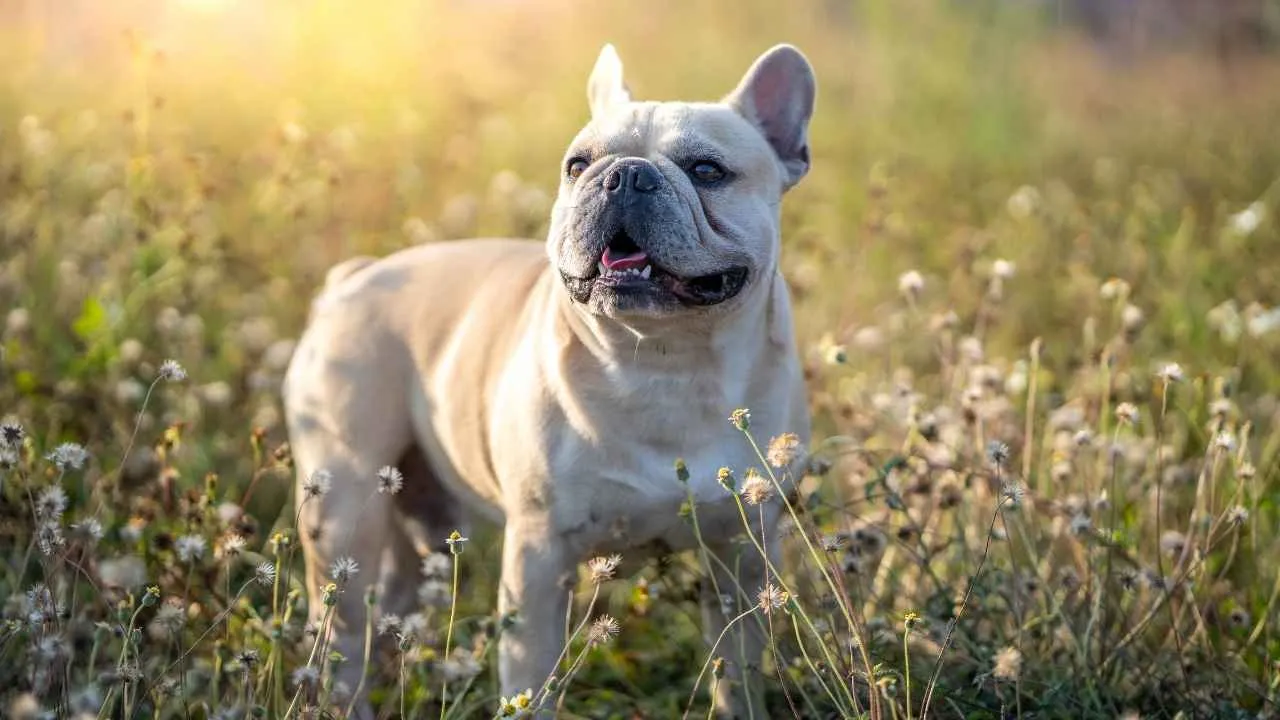
Wrinkles come first with a French Bulldog—they must be cleaned carefully during every bath. Dirt and moisture settle into folds around the face and tail, and skipping them can lead to irritation. A soft cloth and patience make the difference here.
This breed’s short coat requires only occasional shampooing. Most French Bulldogs stay calm when water is introduced slowly, as long as it’s lukewarm and not poured suddenly. Many will simply sit and wait for the rinsing to finish.

Their stubborn streak sometimes shows up during grooming, but treats help them cooperate. Early exposure to gentle bathing routines creates familiarity that pays off later. Most respond better to a calm atmosphere than firm correction.
French Bulldogs can be sensitive to temperature, so the bathroom environment matters. A slightly warm room helps them relax and keeps them from shivering. Owners often bathe them in a sink or a low tub for comfort.
After the bath, drying the folds is essential. Moisture trapped in creases can cause redness or odor, so each fold gets a dab with a towel. Light dabs are better than rubbing, which can irritate sensitive skin.
Quick Tips
Keep a small towel dedicated just for fold-drying after baths.
Bathe them in the cooler parts of the day to avoid overheating.
Use a sprayer instead of a pitcher to control water flow.
6. Pug
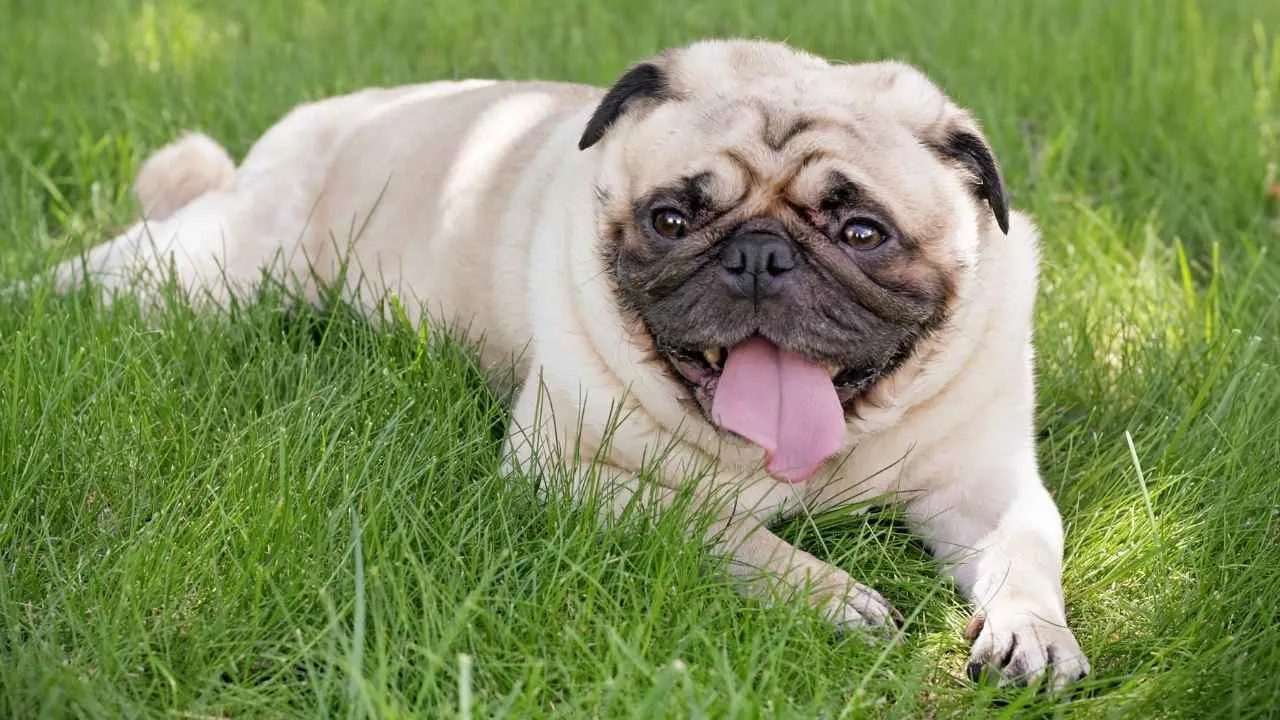
For pugs, bath time often feels like a social activity—they thrive on closeness and happily stay near their owner’s hands. Their affectionate nature shows in the way they lean in for scrubs and stand still for rinsing. Calm words and familiar scents help maintain that comfort.
The double coat surprises many new owners, since it sheds steadily year-round. They are low-odor breeds and do not require occasional baths. They clear away loose hair, but should be balanced; too many can dry their skin. A monthly wash suits most pugs unless muddy walks demand more.
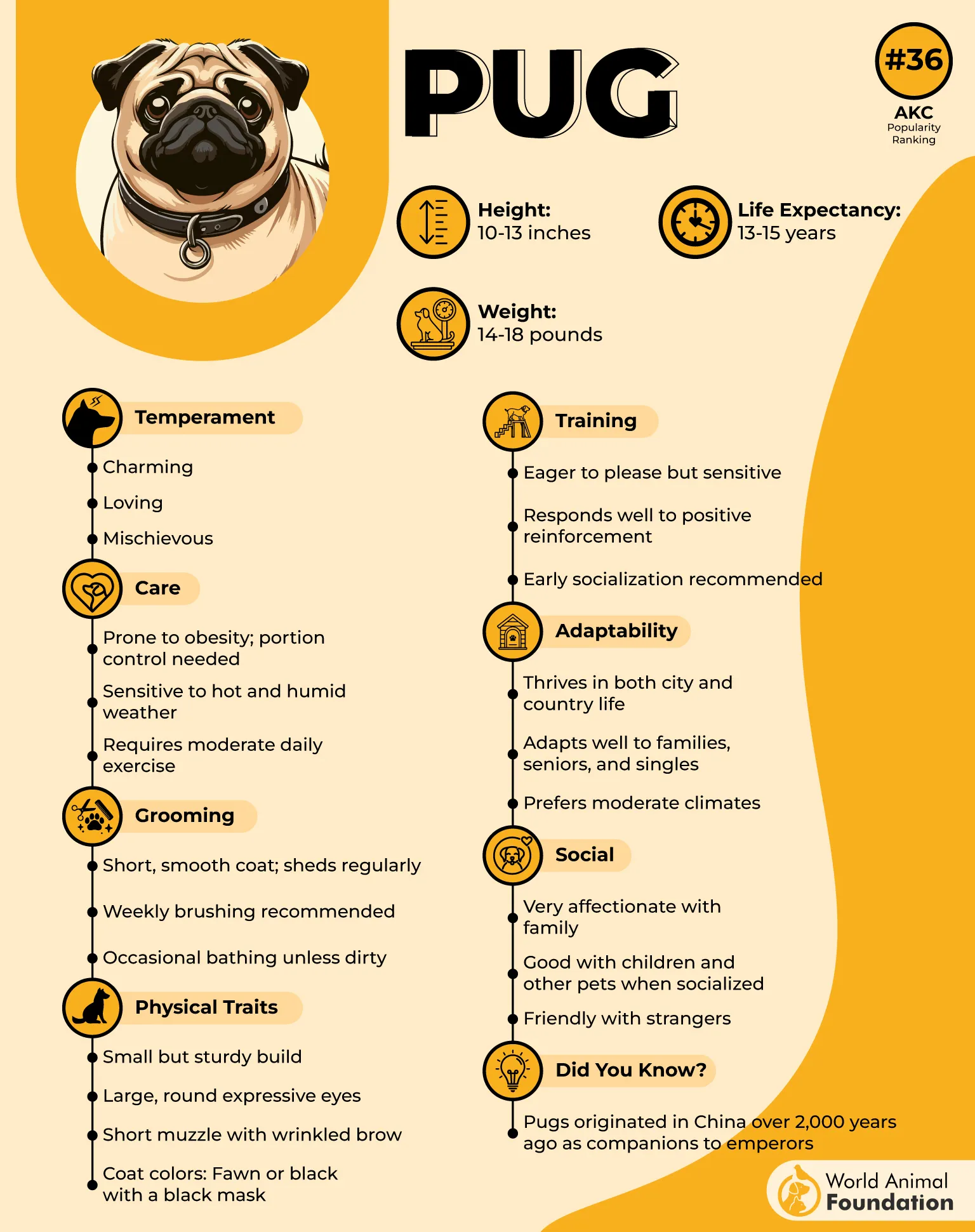
Their breathing anatomy makes them prone to overheating, so the water should always feel neutral to the touch. A bathroom that’s too warm can cause stress, while cold water triggers discomfort. Moderation in temperature keeps them relaxed.
Wrinkle care is non-negotiable with this breed. Moisture and debris settle into facial folds easily, so every bath includes a gentle clean-and-dry ritual. Skipping this step quickly leads to irritation.
Nail and paw maintenance often ties into bath time for pugs. They tolerate handling well when rewarded for cooperation. Short grooming sessions spread over time work better than trying to do everything in one go.
Quick Tips
Wipe folds daily, even between baths, to prevent buildup.
Use a wide-tooth comb before shampooing to lift shed hairs.
Keep their head elevated slightly during rinsing to avoid water going up the nose.
7. Greyhound

The Greyhound’s slender body and low body fat make them unusually sensitive to cold baths. Warm, shallow water is key—they will visibly relax if the temperature feels right. A shiver is your cue to wrap them up fast.
Their coat barely needs maintenance, and most greyhounds go weeks without needing a real bath. A soft curry brush removes dust and loose fur, making water time quick and easy. For many, a 10-minute rinse is plenty.
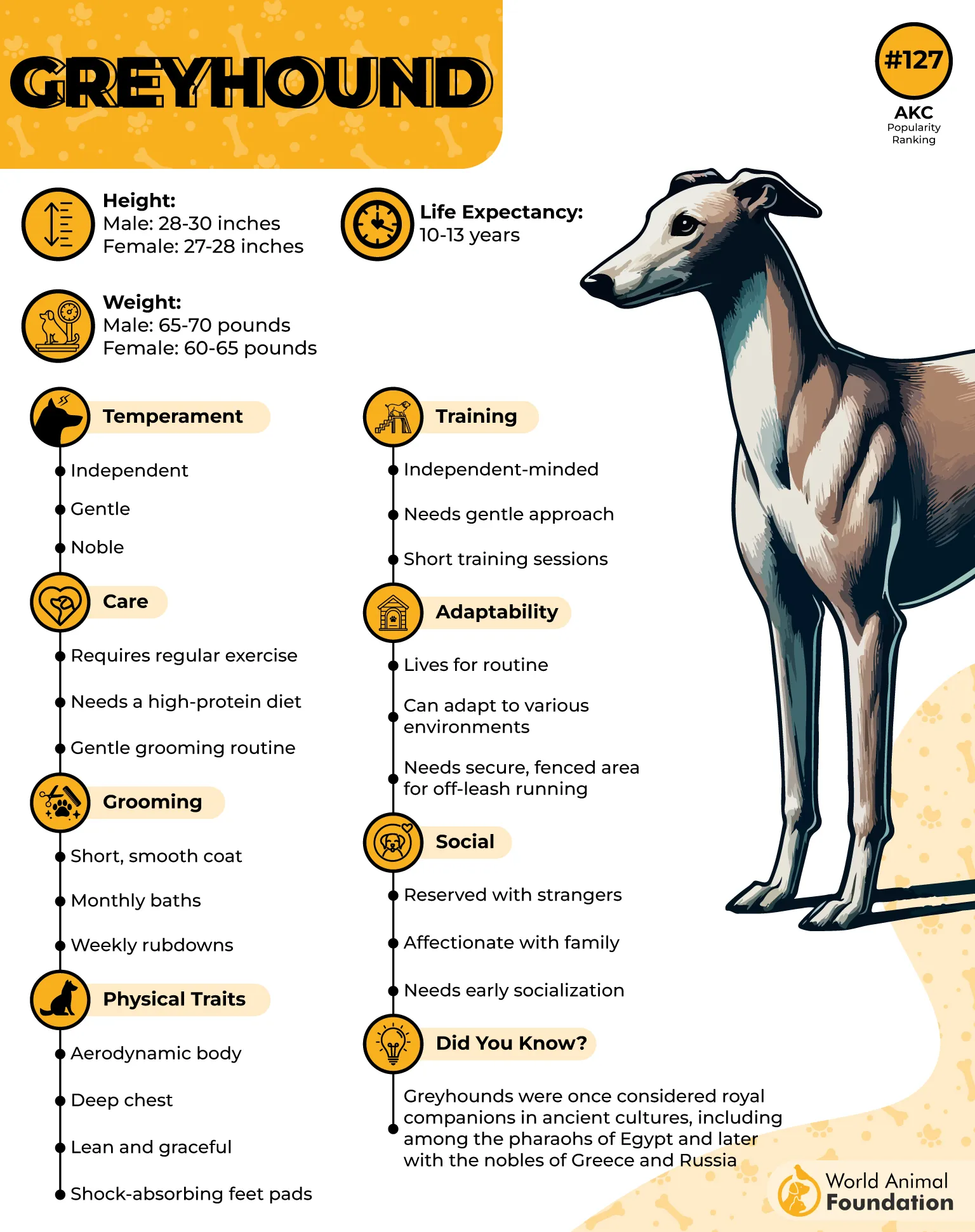
Despite their athletic history, Greyhounds tend to be surprisingly still during grooming. They seem to prefer short, calm sessions with steady hands over drawn-out fuss. A calm owner sets the tone.
Some greyhounds may hesitate at first about entering the tub, but they rarely panic once inside. Their trust builds quickly when handled with patience. A few calm repetitions early on create lasting habits.
Drying is nearly effortless because of their thin coat, but lingering dampness can chill them. Towels do most of the work; a warm room finishes the job. Their long limbs often need a second check for hidden damp patches.
Quick Tips
Warm up the room before bringing a greyhound in for a bath.
Lay out two large towels—one for initial drying, one for a final wrap.
Finish with a quick rub using a grooming mitt to bring out their natural sheen.
Conclusion
A dog’s skin benefits from thoughtful grooming, and baths are one of the simplest ways to maintain their overall comfort. Most dogs respond well when bath time is approached with patience and consistency, turning what could be a chore into a shared routine. Curly coats, dense undercoats, or sleek fur all need different handling, but regular baths keep every texture healthy and fresh.
Some breeds will always need a professional groomer for trims and coat care, yet every pup gains confidence when the basics are introduced at home. Taking baby steps—letting them sniff the tub, hear the running water, and feel a soft stream—helps create a positive experience from the start. Even puppies learn to relax when the water is warm, the floor is safe, and the handling is gentle.
Bath time doesn’t have to be just another task; it can become a moment of connection between humans and their dogs. With the right approach, even a dog with boundless playful energy can learn that baths mean comfort rather than stress. For breeds that love swimming or splashing, the tub may even feel like fun, and for others, the warm tap water soothes like a mini spa. When grooming is approached with care, the bath transforms from an obligation into a shared ritual both dog and owner enjoy.


